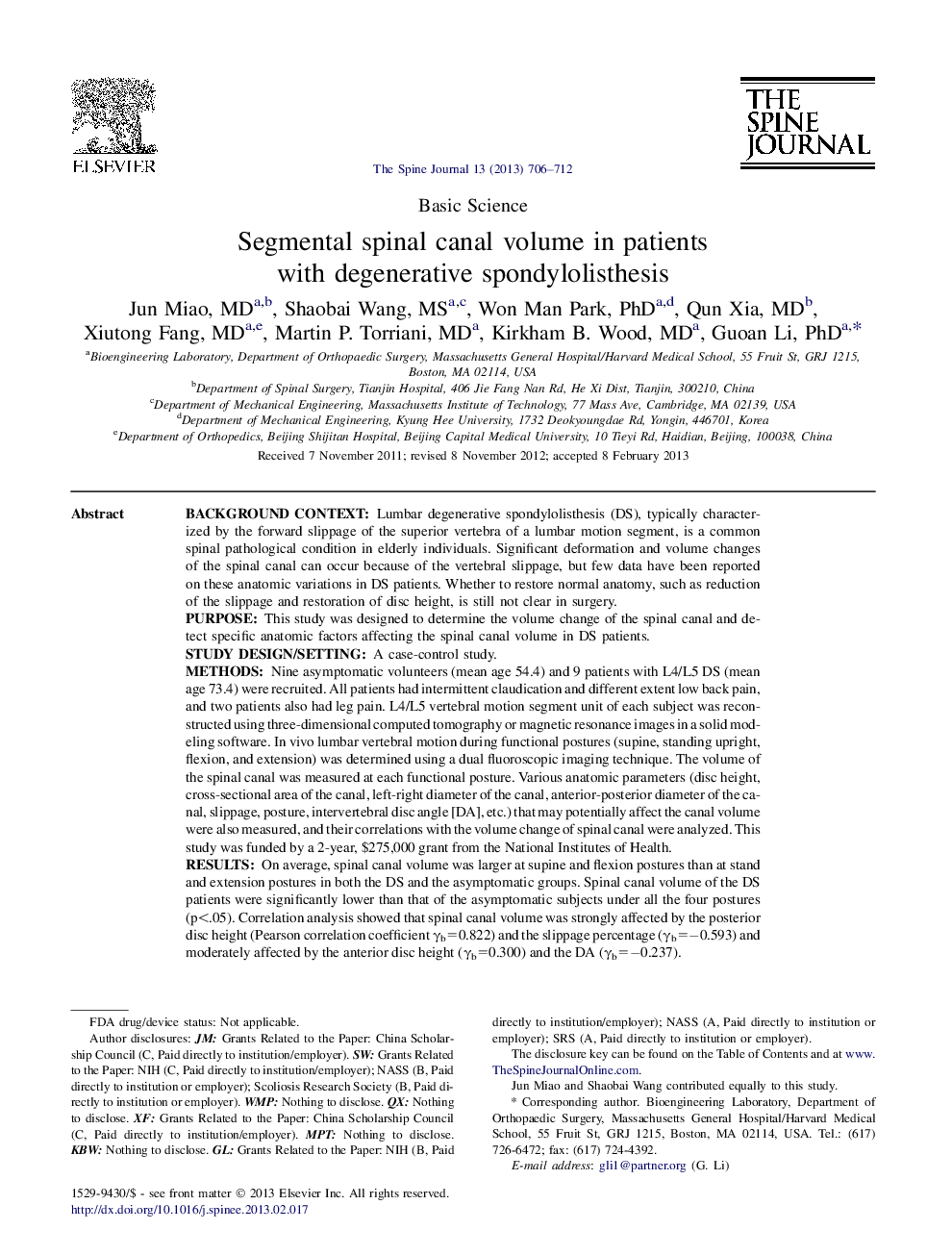| کد مقاله | کد نشریه | سال انتشار | مقاله انگلیسی | نسخه تمام متن |
|---|---|---|---|---|
| 4096899 | 1268572 | 2013 | 7 صفحه PDF | دانلود رایگان |

Background contextLumbar degenerative spondylolisthesis (DS), typically characterized by the forward slippage of the superior vertebra of a lumbar motion segment, is a common spinal pathological condition in elderly individuals. Significant deformation and volume changes of the spinal canal can occur because of the vertebral slippage, but few data have been reported on these anatomic variations in DS patients. Whether to restore normal anatomy, such as reduction of the slippage and restoration of disc height, is still not clear in surgery.PurposeThis study was designed to determine the volume change of the spinal canal and detect specific anatomic factors affecting the spinal canal volume in DS patients.Study design/settingA case-control study.MethodsNine asymptomatic volunteers (mean age 54.4) and 9 patients with L4/L5 DS (mean age 73.4) were recruited. All patients had intermittent claudication and different extent low back pain, and two patients also had leg pain. L4/L5 vertebral motion segment unit of each subject was reconstructed using three-dimensional computed tomography or magnetic resonance images in a solid modeling software. In vivo lumbar vertebral motion during functional postures (supine, standing upright, flexion, and extension) was determined using a dual fluoroscopic imaging technique. The volume of the spinal canal was measured at each functional posture. Various anatomic parameters (disc height, cross-sectional area of the canal, left-right diameter of the canal, anterior-posterior diameter of the canal, slippage, posture, intervertebral disc angle [DA], etc.) that may potentially affect the canal volume were also measured, and their correlations with the volume change of spinal canal were analyzed. This study was funded by a 2-year, $275,000 grant from the National Institutes of Health.ResultsOn average, spinal canal volume was larger at supine and flexion postures than at stand and extension postures in both the DS and the asymptomatic groups. Spinal canal volume of the DS patients were significantly lower than that of the asymptomatic subjects under all the four postures (p<.05). Correlation analysis showed that spinal canal volume was strongly affected by the posterior disc height (Pearson correlation coefficient γb=0.822) and the slippage percentage (γb=−0.593) and moderately affected by the anterior disc height (γb=0.300) and the DA (γb=−0.237).ConclusionsThe volume of spinal canal is affected by multiple factors. Increased spinal canal volume at supine and flexion positions may explain the clinical observations of relief of symptoms at these postures in DS patients. The data also suggest that reduction of slipped vertebral body, decrease of DA, intervertebral distraction, and decompression could all be effective to increase the canal volume of DS patients thus to relieve clinical symptoms.
Journal: The Spine Journal - Volume 13, Issue 6, June 2013, Pages 706–712